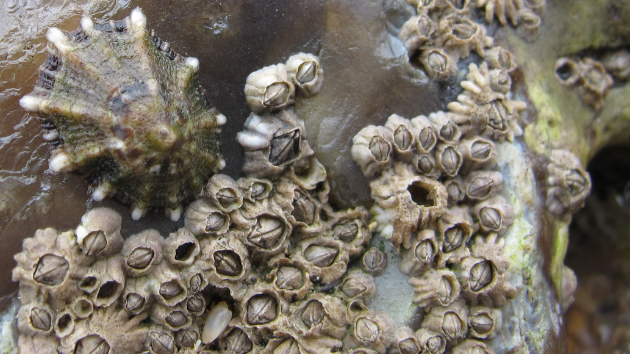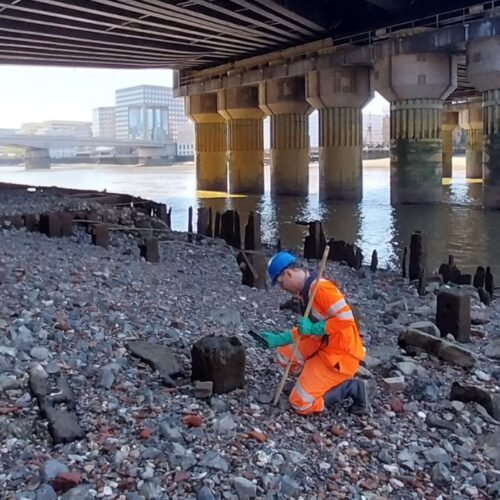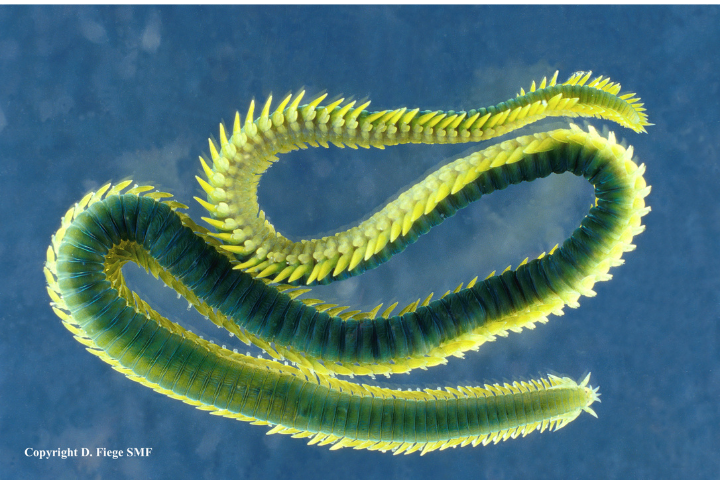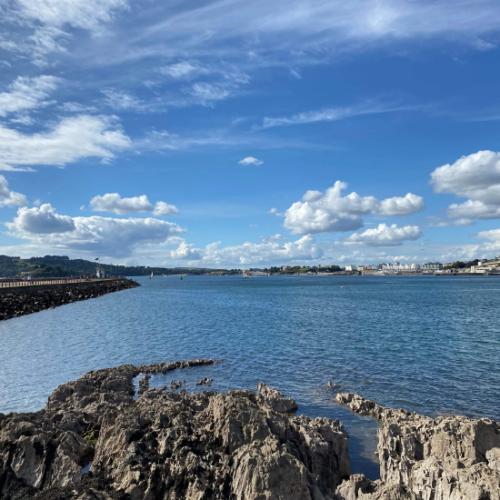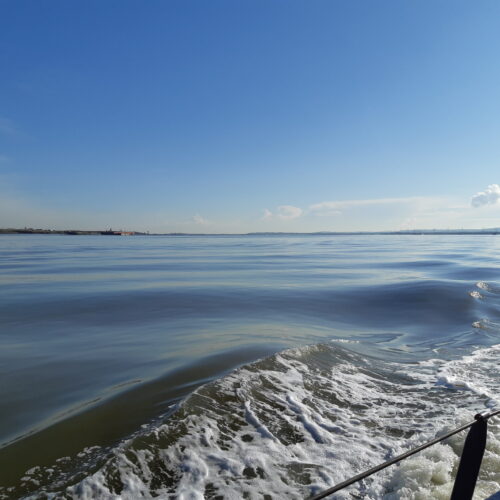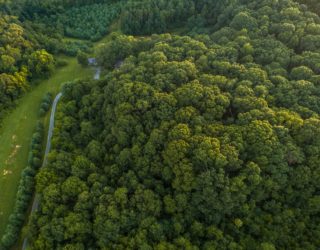Barnacles are a common sight on rocky shores, lining the intertidal zone with their small, cone-shaped shells (Figures 1, 2). These calcareous cones are formed of interlocking plates and surround a soft ‘shrimp’ like body, rarely visible to beachgoers. During low tide, the moveable plates at the top of the barnacle are clamped tightly shut to avoid drying out. When submerged, the plates are opened and long feathery legs extend into the surrounding water to feed on suspended material. (1)

Because of their calcareous outer shell, barnacles were classified with molluscs for many years. However, they are in fact crustaceans, more closely related to shrimps and lobsters than to mussels or limpets. The typical crustacean body-plan is extremely modified in barnacles, but they do display some fundamental features of the group. These include the elements of the head and the presence of a planktonic nauplius larvae in their life cycle. (2)
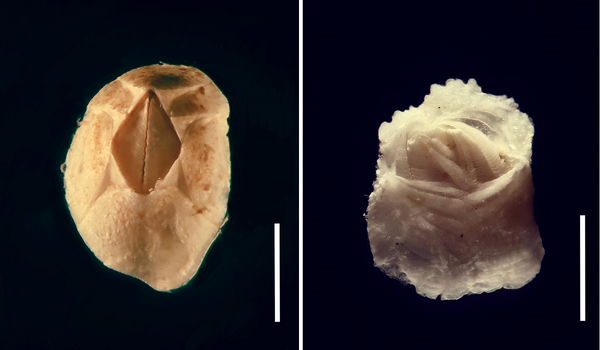
In barnacles, the characteristic nauplius larva is followed by another larval stage, called the cypris. The cypris larva is able to detect and adhere to an attachment site, which has suitable environmental conditions and near a potential mate. Cyprids follow chemical cues, detecting the surface physiochemistry, the presence of biofilms and pheromones from settled adults. Once they find a suitable site, they secrete a permanent adhesive. This cement is one of the most powerful natural glues known and this makes barnacles such prolific foulants. (3)
Barnacles are one of the most dominant marine fouling organisms. Attaching to the hulls of ships, they can increase the weight and drag of the ship, resulting in increased fuel consumption. The economic impact of this is estimated to be enormous, making anti-biofouling solutions extremely valuable. In the 1970s, Tributyltin (TBT) based paints were found to be a very effective anti-foulants and, by the mid-1980s, over 80% of commercial vessels used these paints. The biofouling problem was considered solved until environmental issues, including deformities and sex-changes in non-targeted species, started to be associated with the leaching of TBT from the paints. Regulations on TBT were enforced in 1990 and a global ban for most ships is now in place. Paints including biocides are now also under scrutiny. The need to find new solutions to biofouling is driving research into natural products, with the focus on barnacle fouling. (4)
Although considered a negative by mariners, aggregations of barnacles are important to faunal communities. For Thomson’s marine team, finding barnacle encrusted rocks in benthic samples is usually associated with increased abundance and diversity. This is because the channels and small spaces created by the barnacles provide additional settling sites and protection for other organisms. A large variety of fauna can be found in and on barnacle shells, including small invertebrates and fish. (5)
Our marine taxonomists get especially excited, when they find less commonly seen barnacles in their samples. Whilst volcano-shaped ‘acorn’ barnacles have become the archetype of the group ‘Cirripedia’ (Figure 2), there are some less recognisable forms. This is hardly surprising with over 1400 described species of barnacles (1). Seen ‘through the lens’ in the photo below is a pedunculate barnacle, Scalpellum scalpellum (Figure 3). It has a fleshy stalk supporting the main body which is encapsulated by calcareous plates. In this species, the stalk (or peduncle) is also armoured with small scales. (6). It lives subtidally and is typically found at depths around 170 m, attached to other animals, such as hydroids, echinoderms, and gorgonian corals (7, 8).

After stormy weather, pedunculate barnacles may be found washed up on the beach and their unusual appearance makes them a perplexing find. In the Middle Ages, people thought that they resembled the neck and head of a goose and believed that they were the eggs of the barnacle goose. It is now known that the barnacle goose is a migratory bird, laying eggs in the Arctic during summer months. Interestingly, this theory not only led to pedunculate cirripedes being known as goose or gooseneck barnacles, but this is also why we call all cirripedes by their common name, barnacles. (9)
Author: Joanna Gordon
References
1. NOAA (2021). What are barnacles? National Ocean Service website. Available at: https://oceanservice.noaa.gov/facts/barnacles.html#:~:text=They%20secrete%20a%20fast%2Dcuring,it%20can%20be%20used%20commercially (accessed 12/11/2022).
2. Brusca C.R. & Brusca G.J. (2003). Invertebrates. 2nd ed. Sinauer Associates, Inc. Sunderland, Massachusetts.
3. Liang C., Strickland J., Ye Z., Wu W., Hu B. & Rittschof D. (2019). Biochemistry of Barnacle Adhesion: An Updated Review. Frontiers in Marine Science 6(565). Available at: https://doi.org/10.3389/fmars.2019.00565 (accessed 13/11/2022).
4. Holm E.R. (2012). Barnacles and Biofouling. Integrative and Comparative Biology. 52(3): 348–355. Available at: https://doi.org/10.1093/icb/ics042 [accessed 13/11/2022).
5. Barnes M. (2003). The use of intertidal barnacle shells. In Barnes, M. & Gibson, R. N. (eds) Oceanography and Marine Biology: An Annual Review, 38: 157-187.
6. Hosie A.M. (2008). Scalpellum scalpellum Velvet goose barnacle. In Tyler-Walters H. & Hiscock K. (eds) Marine Life Information Network: Biology and Sensitivity Key Information Reviews. Plymouth: Marine Biological Association of the United Kingdom. Available at: https://www.marlin.ac.uk/species/detail/2235 (accessed 12/11/2022).
7. Buhl-Mortensen L. & Hassel A. (2021). Distribution and habitat of Scalpellidae (Cirripedia: Thoracica) in the Norwegian and Barents Seas. Marine Biology Research, 17(3): 223-233. Available at: https://doi.org/10.1080/17451000.2021.1928220 (accessed 12/11/2022).
8. Chan G.K.K., Kolbaskov G.A. & Høeg J.T. (2016). Collecting and Processing Thoracican, Acrothoracican, and Rhizocephalan Cirripedes. Journal of Crustacean Biology, 36(5): 52–760. Available at: https://doi.org/10.1163/1937240X-00002469 (accessed 12/11/2022).
9. Harper D. (2022). Etymology of barnacle. Online Etymology Dictionary. Available at: https://www.etymonline.com/word/barnacle (accessed 12/11/2022).
Photographic credits
Figures 1-3: Ruth Barnich, Thomson Environmental Consultants
